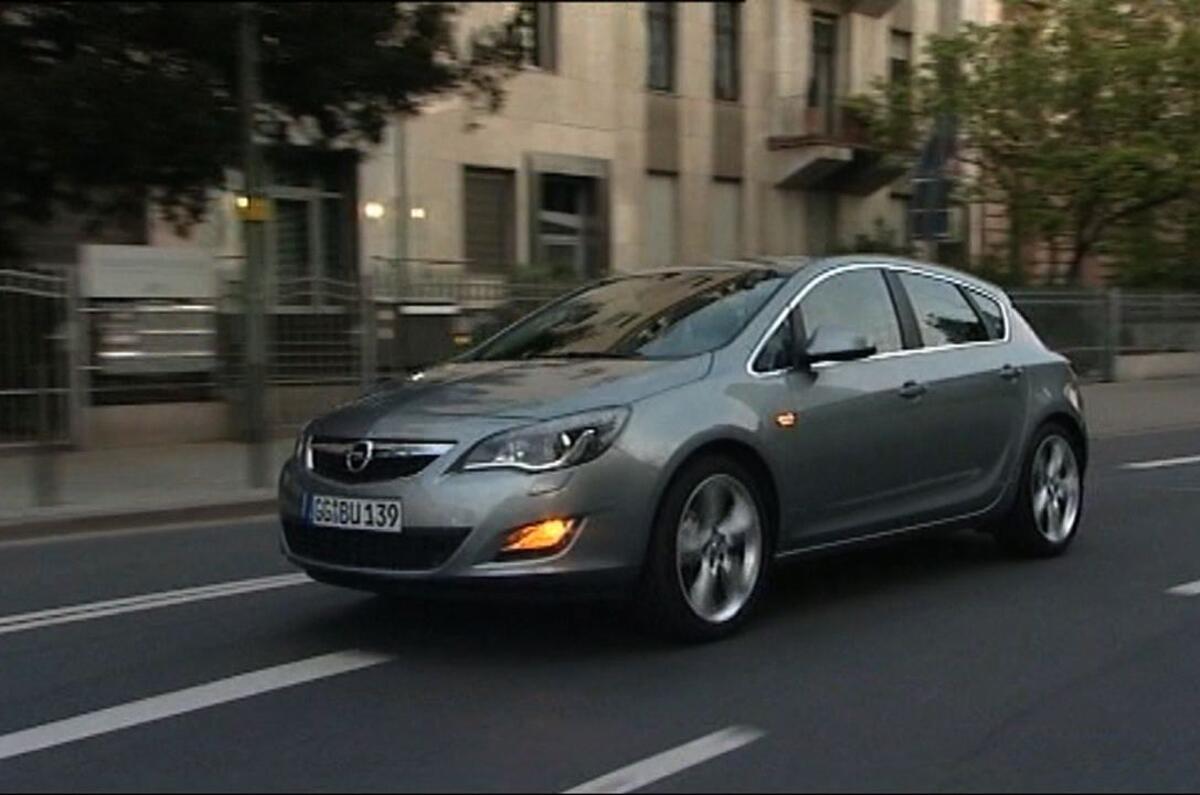What is it?
Ahead of its market launch late in 2009 we’ve had the chance to drive several iterations of the next-generation Vauxhall/Opel Astra.
We’ve tried a version that was production fit, with a 1.6-litre turbo petrol engine and on standard suspension, a spec that’ll be known as SE in the UK. A sportier set-up will also be available for SRi models, which use this engine.
What’s it like?
The new Astra’s design is, as you'd expect, heavily influenced by Vauxhall's winner of the Car of the Year award, the Insignia, which signalled a new styling direction for the brand.
Nowhere is this more obvious than in the new Astra's interior, which takes strong hints from the larger car; there's the same steering wheel, very similar dials and major switchgear and, most significantly, a vastly improved driving position.
The previous Astra's relatively high and cramped seating position has gone; the new model's is widely adjustable and seems offset-free, though the seats could use more lateral support. Perceived quality is generally good too, and storage space is impressive. The A-pillar is unhelpfully wide, though, blemishing otherwise sound visibility.
Interior capaciousness is above average for the class, though this is a conventional five-door, five-seat hatchback, and not an MPV wannabe. That's no bad thing, particularly if it means the Vauxhall will be able to challenge its main rivals, the Ford Focus and Volkswagen Golf, on dynamics. The good news is that it can. We'd want to back-to-back a full production car on roads we know to say for sure, but encouragingly it seems to be in their ballpark.
Most promisingly, the new Astra steers with a smoothness reminiscent of its Insignia sibling, though with a touch too much lightness that robs it of a Focus's intimacy. Its ride is comparable to the better cars in this class too. Certainly its secondary ride seems sufficiently smooth and, although it wouldn't hurt the chassis to be more tightly controlled over bigger undulations, body movements are well contained.
A lot will be made of the Astra's new rear axle. Unlike its dynamically accomplished rivals, the Vauxhall doesn't have a multi-link set-up, but instead a torsion beam supplemented by a Watts-linkage. Vauxhall/Opel's engineers say that with it they can attain a sound ride while maintaining a similar level of wheel control and agile handling to a car with fully independent suspension. Certainly, the Astras we've driven handle pretty soundly.
The Astra feels like it pivots around the right area, quite near the driver, and it's fairly agile. There's some mild delay between steering input and the body settling in a corner, but from then on it deals with mid-corner bumps adeptly, with precious little steering kickback.
At its limit it lets go from the front first, but the rear can be worked on the throttle too; usually it's one end or the other (rather than both together) which feel like they're being worked, but we're still confident it has the measure of most cars in the class.
Should I buy one?
We couldn’t say for sure yet. Full production versions of the Astra will be shown at the Frankfurt motor show in September, with the Ellesmere Port-made car going on UK sale at the end of the year, so we’ll reserve judgement until Vauxhall announces the full range and, crucially, pricing.








Add your comment